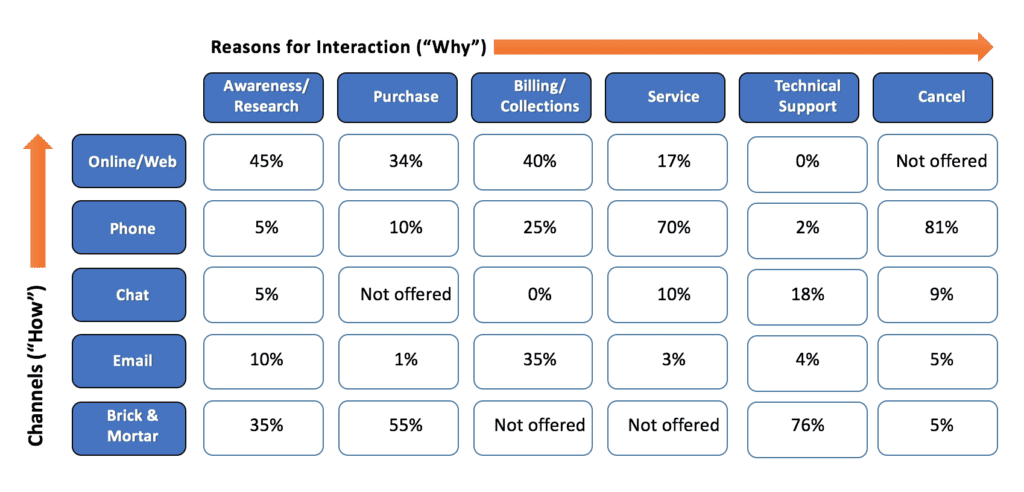
October 23, 2017
Part One:
What channels do we offer, and what are our customers using?
It’s not uncommon for companies to find themselves wondering if they are offering the right channels, why they are offering those channels, and what their long-term channel strategy should be. Even though it is easy to get excited about offering the latest and greatest channel solutions to customers, it is advisable to take a step back and view things from the customer’s perspective when developing a channel strategy.
There are four essential questions companies should be asking themselves along this journey. We will review each one of these during this four-part channel strategy blog series, and they are:
Part 1: What channels do we offer, and what are our customers using?
Part 2: What channels do our customers want, and what capabilities do they expect?
Part 3: How well are we executing on what we currently provide?
Part 4: Have we identified the gaps and taken corrective action?
____________________________________________________________________________
Part 1: What channels do we offer, and what are our customers using?
The first step in taking a strategic, customer-centric approach to contact channel offering is to quantitatively assess which channels are currently offered and how customers are utilizing those channels. This requires a thorough audit of three specific things:
- Channels offered
- Capabilities of offered channels
- Volume by reason for contact across channels
One way to accomplish this is by building a channel matrix, similar to the example shown in Figure 1.

Figure 1: Channel Matrix
On the left side, you will find the various channels currently offered, or “How” customers can reach out today. In the fictitious example used in Figure 1 (above), there are a total of five channels currently available. Channels should be listed regardless of their volume or perceived importance.
Across the top, you will see the different types (or reasons) for interaction. This too should be comprehensive, including all the various interaction types, regardless of their volume or perceived value.
Once these values have been established, the next step is to fill in the various channel volumes by reason for contact. So using the example provided by Figure 1, of all the “Awareness/Research” contacts, determine the percentage of contacts made via Online/Web versus Phone versus Chat, etc. By completing this exercise, it quickly becomes apparent which channels customers use most and for what types of interactions. Not only does this provide a snapshot of channel use, but it may also reveal which channels should be prioritized based on volume. For instance, Online/Web, Phone and Brick and Mortar all play critical roles by handling large percentages of engagements for a variety of contact types.
Mapping out channel offerings also provides an opportunity to ask tough questions. For instance, in Row 1 (Online/Web), Column 6 (Cancel), why can’t customers cancel via Online/Web? Is this a business decision? Is there a technical limitation with the system?
Conversely, this also presents an opportunity to ask why customers aren’t fully utilizing some channels based on their reason for contact. Row 1 (Online/Web), Column 5 (Technical Support) is a good example of this. Although Technical Support is offered via Online/Web, customers aren’t using the resource. Why? Is there an issue with awareness or execution, or is the reason something else entirely?
Although these and other questions will be explored in greater detail in future series posts, it’s evident that creating a channel matrix not only quantifies channel use, it also reveals opportunities and limitations, helping to better guide program initiatives and priorities.
Check back tomorrow for the next blog post in the series, focusing on these questions:
What channels do our customers want, and what capabilities do they expect?
_________________________________________________
Part 1: What channels do we offer, and what are our customers using?
Part 2: What channels do our customers want, and what capabilities do they expect?
Part 3: How well are we executing on what we currently provide?
Part 4: Have we identified the gaps and taken corrective action?